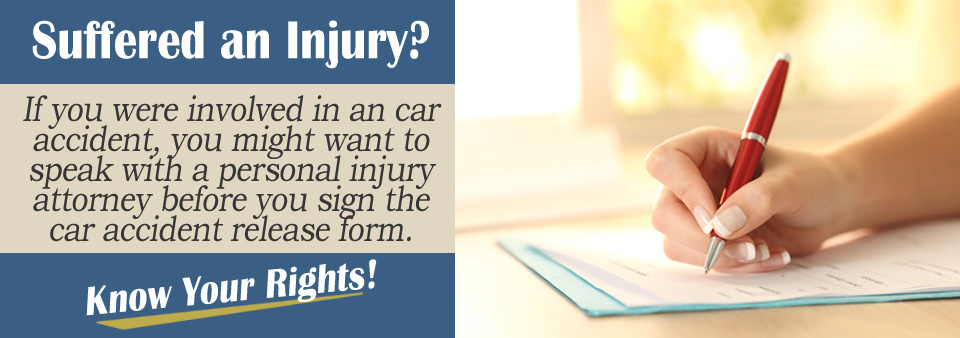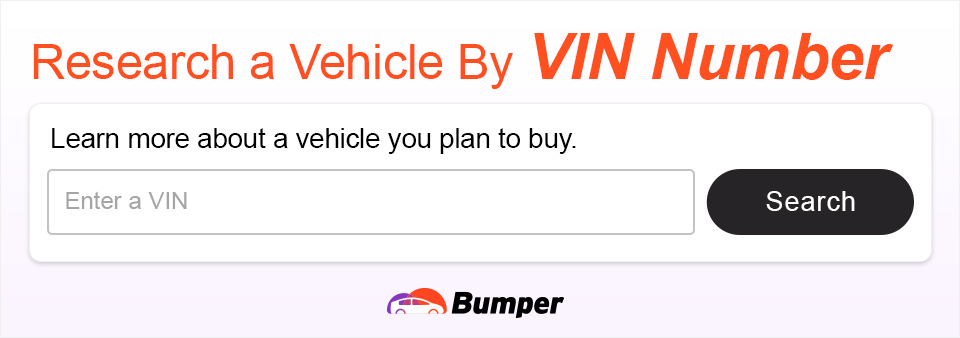If you have been involved in a car accident, you might receive an offer from the other driver's insurance company as an attempt to settle for your damages. Usually, before the insurance company will issue a check to you for your damages they will ask you to sign a "release of all claims" form.
This form has legal implications you need to be aware of before you sign it. You should consult with a personal injury attorney before signing any forms and before you agree to a settlement amount to ensure the offer you are accepting is enough for the damages that resulted.
When there is a car accident involving two vehicles, there is an option in which damages are settled outside the legal system. This way, the person who signs the form will not sue the other part that was involved after the fact. A settlement amount is reached, and payment is issued. An accident release of liability form is used to settle smaller cases outside the legal system.
There are implications of the form, so you need to be fully aware of what you are signing before you sign it. You should consult with a personal injury lawyer before you sign anything and before you agree to a settlement amount, so you can make sure you are being treated fairly and getting a settlement amount that is fair according to the extent of your damages and losses.
Definition - The Release of Claims Form
As part of an insurance settlement agreement, a release of claims form agrees to resolve the differences and dismiss any claims while also releasing the other party involved from any liability for the crash and the damages. Some insurance companies call an accident release form a liability waiver form.
When this form is signed, it releases the party responsible for the accident - the driver and his or her insurance company, from any liabilities and future obligations. Before receiving a payment from the insurance company, you will most likely be asked to sign the form.
What is a Release of Claims Form?
When you reach an insurance settlement agreement, the release of claims form is signed to resolve the differences being addressed by the personal injury claim. The form releases any additional claims that might arise by you and releases the other party involved for any liability for the damages and the fault of the crash. Depending on the insurance company that is involved, it may be called a liability waiver form or an accident release.
As soon as this form is signed, it releases the party responsible for the accident – which includes the driver and his or her auto insurer – from any future liabilities and further obligations. Before the insurance company will send a payment for the damages or the check for the agreed settlement amount, you will be required to sign the waiver or the car accident release of liability form.
The release of liability form is very detailed and precise. It will contain relevant information regarding the personal injury claim because of the car accident.
The form will include specific details about the auto accident, what you have claimed such as bodily injury and property damages, it will identify the parties that were involved in the crash, the amount of payment that was agreed to, and any governing laws of your state regarding the auto accident injury settlement.
What Does The Release Form Indicate?
The accident release form is very precise. It should contain the relevant information regarding your accident claim. That information includes:
- The accident details.
- Your claims, such as any property damages or bodily injury.
- Identifies the parties involved in the accident.
- The amount of payment involved.
- Any governing laws.

Before You Sign The Accident Release Form
Before signing the form, you need to make sure all the damages resulting from the car accident have been adequately covered in the settlement agreement you are reaching with the auto insurance company. After the release form is signed, you cannot make any additional claims for the accident.
If you are still getting medical care for your injuries from the accident, you might need to wait to claim damages until you have recovered. If a statute of limitations comes into play, you should let your personal injury attorney help you make the right decision.
Often, an insurance company will try to settle a claim quickly to save time and money. But usually, there is room for negotiation. If you don't agree with any part of a settlement, you should not sign the release form and accept the payment.
After you have signed the release form, you are responsible for any future costs resulting from the car accident. In most cases, you are going to be required to sign the release form before you get the check issued to you by the insurance company.
The insurance company will keep the check until it receives the signed release form. The release forms can vary significantly, but they usually all have the same legal consequences and basic clauses:
- Gives up to the right to sue
- Non-admission of fault
- Releases obligation to pay
If you agree to the terms, you can sign the release form and accept the settlement offer. Because of the impact of the release form, you should consult with an experienced personal injury attorney before signing the form.
Release of Liability Car Accident
When you agreed to an insurance settlement for a car accident, a release of claims form is signed to ensure no further personal injury claim will be made. As soon as this form is signed, it means the party found responsible for the accident, which includes the driver and his or her vehicle insurer, is now released from any liabilities in the future that could arise.
Before the at-fault driver’s insurance company sends any payment for the damages or a check for the agreed settlement amount, you are required to sign the car accident release of liability form.
The purpose of the form is to make sure that the person who signs it will not sue the other party involved after the fact.
The form provides exact details about the auto accident, the amount you have claimed which should include for both bodily injury and property damages. It will also identify the parties that were involved in the crash, the agreed payment amount and any state laws relevant to the auto accident injury settlement.
There are certain facts that should be included when filing in the form. This includes:
- the releaser’s name, who is the person who guarantees not to file any claims against the party who caused the damage, who is referred to as the releasee;
- the releasee’s name, who is the person responsible for the damage in a car accident and is guaranteed not to be brought to trial after the vehicle release of liability form has been signed;
- the amount of compensation the releasee is required to pay;
- the precise time of the accident.
The form should only be completed once a satisfactory settlement has been reached so that the case can be finally settled.
Talk to a Lawyer Before Signing The Release Form
If you have been asked to sign a car accident release of liability form by the other driver’s auto insurance company, do not agree to anything or sign anything before you speak with a personal injury attorney who is licensed in your state.
A personal injury attorney will look out for your best interests and determine if you are being treated fairly. If you aren’t being treated fairly and getting the settlement that you deserve, your personal injury attorney will help negotiate a better one for you.
If you are still receiving medical care for injuries suffered in the accident, you may need to wait until treatment has finished or wait to claim damages after you have recovered. However, that isn’t always possible and sometimes there are life-altering injuries.
In that case, your accident injury lawyer will review the details of your case and determine a fair settlement, calculating future medical costs and the future lost earnings. After you have signed the release, you cannot claim any additional damages for the auto accident.
If a statute of limitations comes into play regarding your claim, your lawyer will help you determine the best way to proceed and will work to come up with a fair value for your settlement.
The other driver’s insurance company may want to resolve the matter quickly and get the claim settled. This is to help save them some money. If you are not in full agreement with any part of the personal injury settlement, don’t accept the payment and most importantly, don’t sign the release of liability form.
After the form has been signed, you will be responsible for any of your future costs associated with the car accident. You will be required to sign the form before you get a check from the insurance company in most situations.
The insurance company will keep the check until the signed release form is in their possession. Release forms can vary greatly from one insurance company to the next and from one state to another, but they usually have the same legal consequences.
All such forms have the same basic clauses, which include non-admission of fault, release of obligation to pay, and giving up the right to sue. If you agree to the terms, you can accept the settlement offer and sign the release form.
Because of the severity of the impact of the release form, don’t sign it until it has been carefully reviewed by a personal injury lawyer who is representing you and your interests.
There is a statute of limitations that applies, so complete the Free Case Evaluation Form and have the details of your case shared with an auto accident injury lawyer who practices in your state. Don’t delay getting the help that you need to ensure your claim is handled properly.
Schedule your free case review today because if you don’t file your claim before time runs out, you cannot recover compensation for your auto accident damages.
